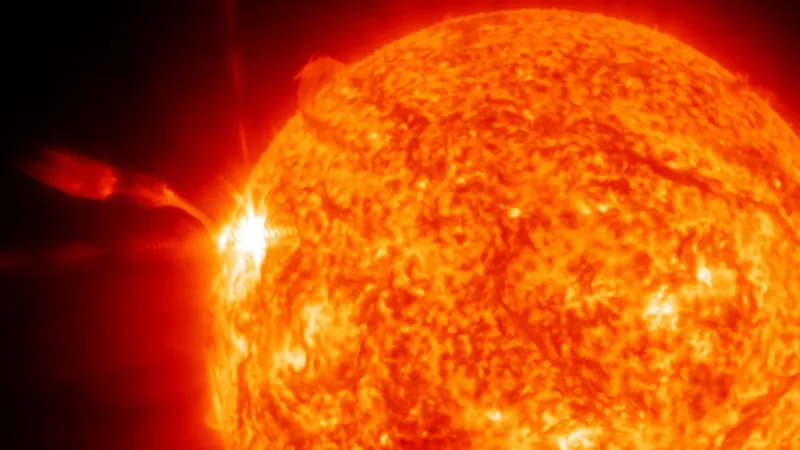
Shocking Discovery! Solar Flares Measured at an Incredible 108 Million Degrees!
2025-09-11
Author: Jia
Unveiling a Fiery Mystery
Hold onto your hats, because new research reveals that our sun's explosive solar flares are far hotter than scientists ever imagined! A team led by Alexander Russell from the University of St. Andrews has determined that these flares can heat particles in the sun's atmosphere to a mind-boggling 60 million degrees Celsius (that’s 108 million degrees Fahrenheit) — a staggering jump from earlier estimates that ranged from 10 million to 40 million degrees Celsius.
The Heat is On!
Solar flares, massive explosions in the sun's atmosphere, unleash intense bursts of radiation that interfere with satellites, scramble radio signals, and pose serious risks to astronauts venturing into space. This groundbreaking research not only sheds light on the intensity of these events but also uncovers a universal law linking the behavior of particles in the sun's atmosphere.
A Long-Standing Mystery Solved?
For over four decades, astronomers have been baffled by peculiar features in the light emitted by solar flares. The spectral lines representing various elements appear much blurrier than theories suggest. Initially, scientists attributed this to turbulence within the sun’s plasma, akin to the chaotic swirling of boiling water. However, as the new study points out, the existing theories simply didn’t hold up when scrutinized.
Revolutionizing Our Understanding
Russell’s team proposes a game-changing explanation: the particles involved in solar flares are incredibly hotter than previously accepted. Their experiments into magnetic reconnection—the mechanism behind flares—revealed that while electrons reach temperatures of 10 to 15 million degrees Celsius, ions can soar beyond 60 million degrees Celsius. This significant temperature discrepancy, which allows ions and electrons to share heat over time, impacts the flares' behavior.
Implications for Space Weather Forecasting
This discovery isn't just an exciting academic revelation; it could revolutionize how we predict space weather! If scientists have been underestimating the energy involved in flare activity, the current models for predicting solar events may need a serious overhaul. Enhanced predictions could provide satellite operators, airlines, and space agencies with vital information, granting them precious extra time to prepare for dangerous solar phenomena.
A Call for New Solar Models
Moving forward, researchers advocate for a new generation of solar models that treat ions and electrons as separate entities, rather than as a uniform temperature. This innovative 'multi-temperature' approach, already common in other plasma environments, could reshape our understanding of the sun and its formidable power.

 Brasil (PT)
Brasil (PT)
 Canada (EN)
Canada (EN)
 Chile (ES)
Chile (ES)
 Česko (CS)
Česko (CS)
 대한민국 (KO)
대한민국 (KO)
 España (ES)
España (ES)
 France (FR)
France (FR)
 Hong Kong (EN)
Hong Kong (EN)
 Italia (IT)
Italia (IT)
 日本 (JA)
日本 (JA)
 Magyarország (HU)
Magyarország (HU)
 Norge (NO)
Norge (NO)
 Polska (PL)
Polska (PL)
 Schweiz (DE)
Schweiz (DE)
 Singapore (EN)
Singapore (EN)
 Sverige (SV)
Sverige (SV)
 Suomi (FI)
Suomi (FI)
 Türkiye (TR)
Türkiye (TR)
 الإمارات العربية المتحدة (AR)
الإمارات العربية المتحدة (AR)